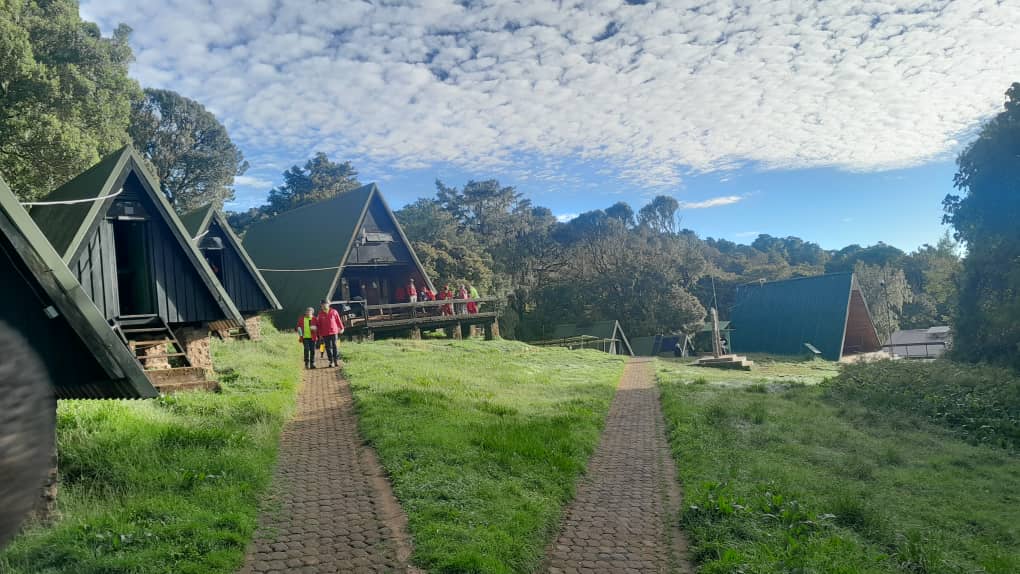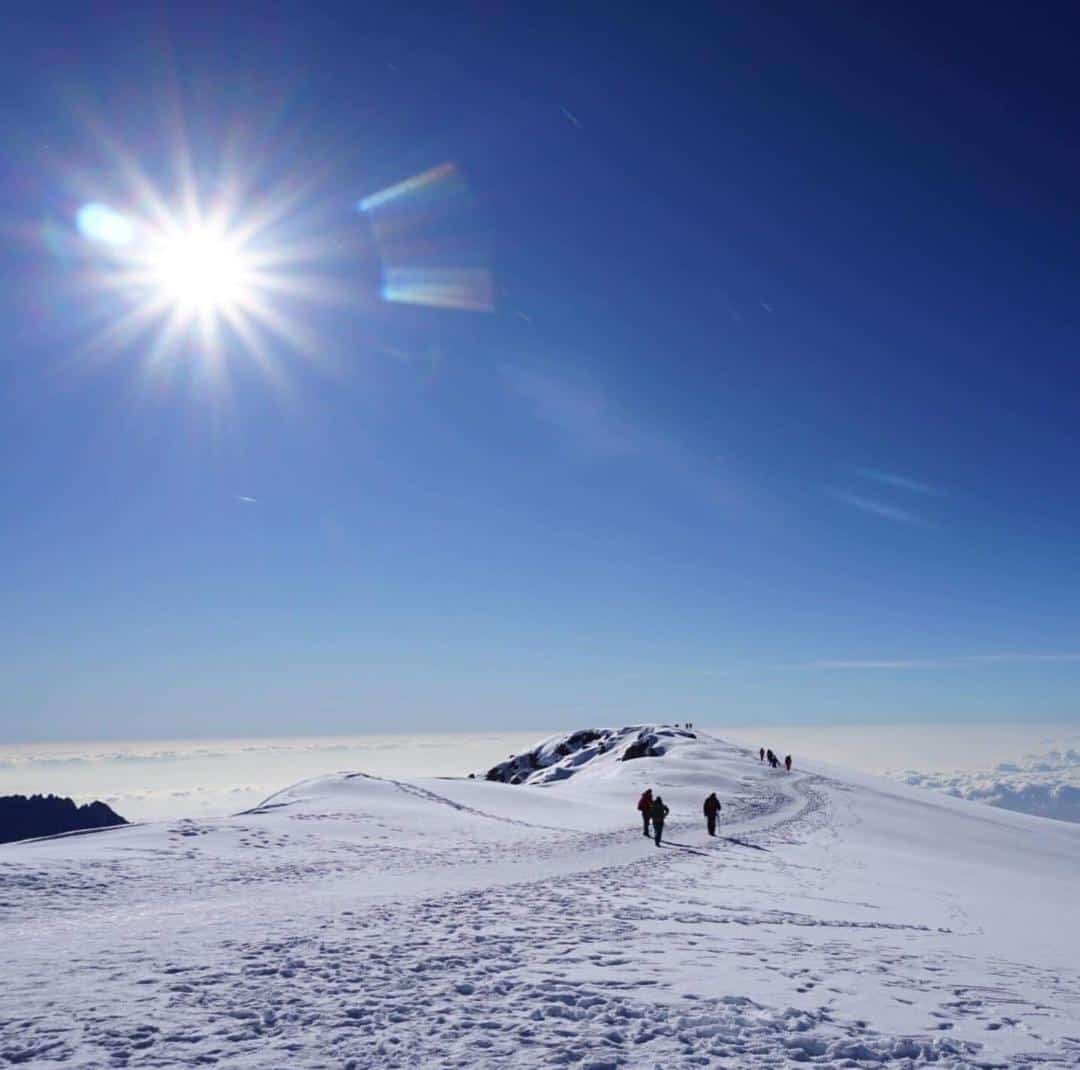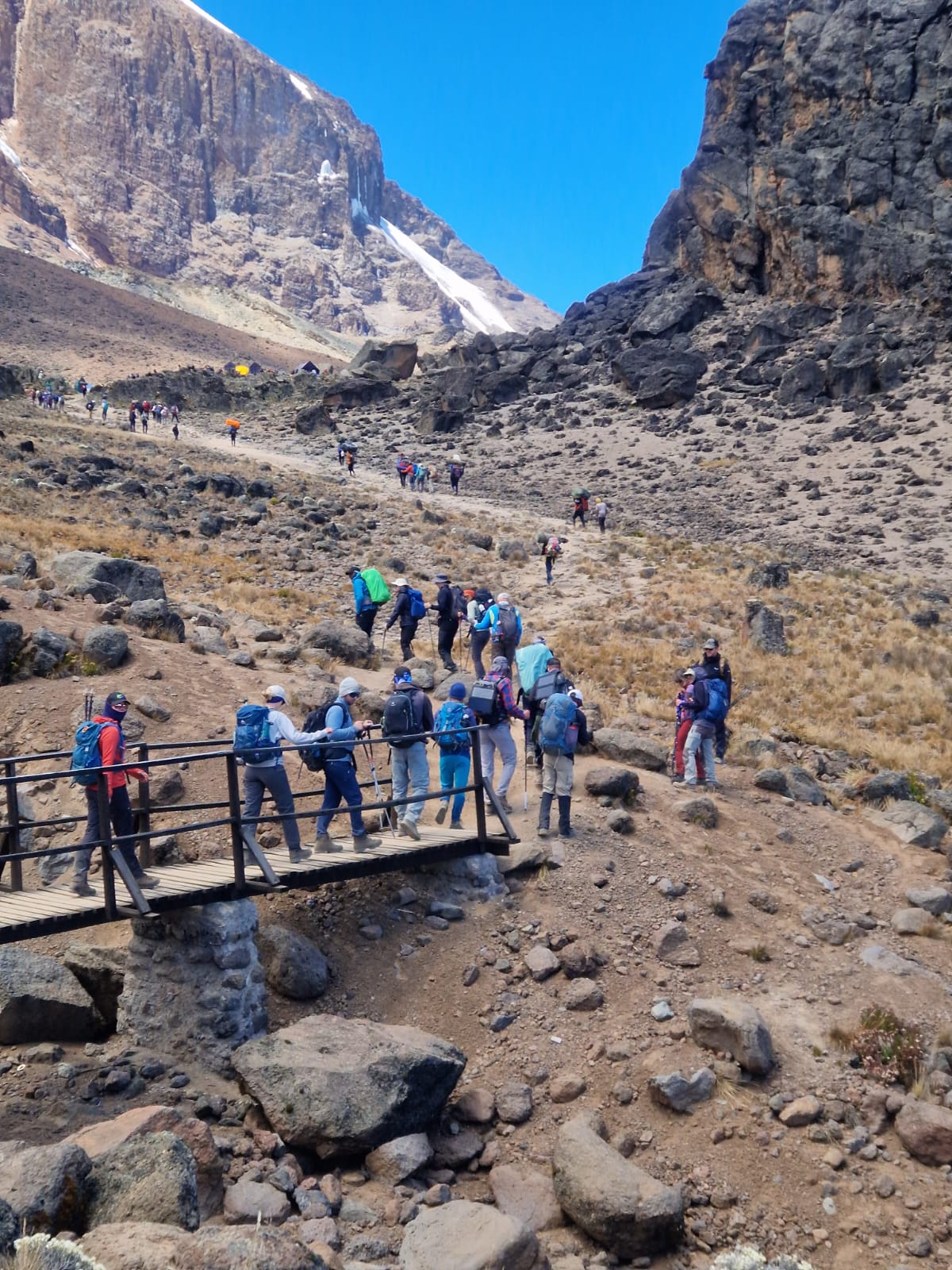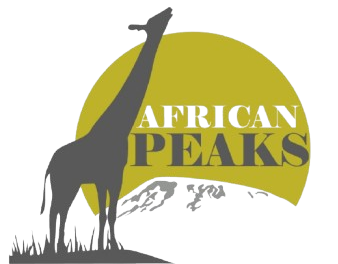Mount Kilimanjaro
Mount Kilimanjaro, often referred to as the “Roof of Africa,” is the tallest mountain on the African continent and the highest free-standing mountain in the world. Located in northeastern Tanzania near the border with Kenya, Kilimanjaro rises to an impressive 5,895 meters (19,341 feet) above sea level, and its iconic snow-capped summit has become a symbol of adventure, endurance, and natural beauty.
Geography and Geology
Kilimanjaro is a dormant stratovolcano with three distinct volcanic cones:
- Kibo: The central and tallest cone, where the summit, Uhuru Peak, is located.
- Mawenzi: A rugged and craggy peak that is less accessible, making it a more challenging climb.
- Shira: The oldest of the three cones, now eroded into a plateau.
Formed over millions of years by volcanic activity, Kilimanjaro is believed to have last erupted approximately 360,000 years ago. The mountain’s unique geology results in dramatic landscapes, with distinct layers of lava, volcanic ash, and rock, giving the summit area a rugged, otherworldly appearance.
Climatic Zones and Ecosystem Diversity
Kilimanjaro is unique for the diverse ecosystems it houses, each corresponding to one of the mountain’s distinct climatic zones:
Cultivation Zone (800–1,800 meters)
The lower slopes are primarily used for agriculture, with fertile volcanic soil supporting a range of crops such as coffee, bananas, and maize.
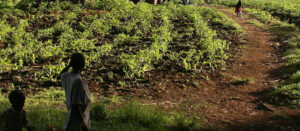
Rainforest Zone (1,800–2,800 meters)
As you climb higher, you enter a lush rainforest teeming with plant and animal life, including colobus monkeys, leopards, and exotic birds. This zone receives the most rainfall, making it a dense and verdant area.

Heather and Moorland Zone (2,800–4,000 meters)
Above the rainforest lies the moorland, characterized by heather plants, unique lobelias, and giant groundsel. This zone is known for its dramatic temperature changes and less rainfall.
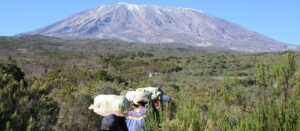
Alpine Desert Zone (4,000–5,000 meters)
Harsh and rocky, this zone features sparse vegetation and extreme temperatures that fluctuate between hot days and freezing nights.
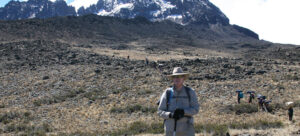
Arctic Zone (5,000–5,895 meters)
The summit zone is a stark, icy landscape with glaciers, volcanic rocks, and snowfields. Oxygen levels are much lower here, creating additional challenges for climbers as they approach Uhuru Peak.
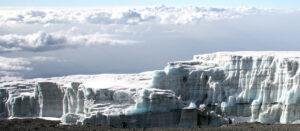
Climate Change and Glacial Retreat
Kilimanjaro’s glaciers and snow cover, immortalized by Hemingway’s The Snows of Kilimanjaro, are rapidly retreating. Scientists believe that, due to global warming, the mountain’s glaciers could vanish within a few decades, a trend that has highlighted the impacts of climate change on unique ecosystems.
Climbing Routes and Tourism
Mount Kilimanjaro offers multiple routes for climbers, each with varying degrees of difficulty, duration, and scenic diversity:
- Marangu Route: Known as the “Coca-Cola Route,” this is one of the easiest paths and is the only one with hut accommodations along the way.
- Machame Route: Often called the “Whiskey Route,” this scenic but challenging trail offers steep climbs and high scenic value.
- Lemosho Route: A longer, more scenic path that gives climbers better acclimatization time.
- Rongai Route: Approaching from the north, this route is drier and less crowded.
- Umbwe Route: The steepest and most challenging, Umbwe is for experienced climbers looking for an intense adventure.
Each year, thousands of people come to Kilimanjaro National Park to attempt the climb. Tourism has positively impacted local communities by providing economic opportunities, but it also necessitates strict environmental management to minimize damage to the delicate ecosystems on the mountain.
Cultural Significance
Mount Kilimanjaro holds cultural significance for the Chagga people, who reside on its slopes. The mountain is woven into local folklore and traditional beliefs, symbolizing strength, mystery, and spirituality. Local guides and porters, often from the Chagga community, are instrumental in assisting climbers and sharing insights into the region’s culture.
A Global Icon of Adventure and Conservation
Kilimanjaro is more than just a mountain; it’s a global symbol of natural beauty, resilience, and the delicate balance between humans and the environment. It represents a call to adventure for climbers worldwide and serves as a stark reminder of the urgency of climate change, as the world strives to preserve this majestic peak for future generations.
Our Top Selling Packages
Mountain Trekking Adventures
